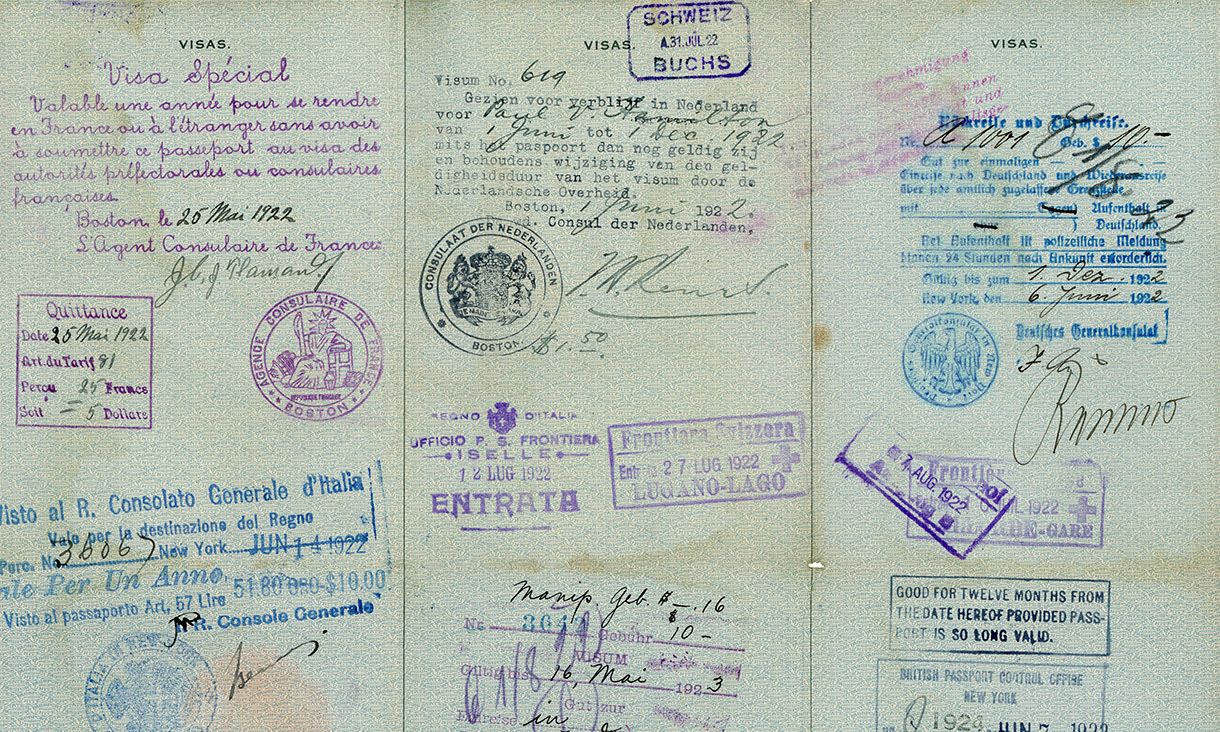Paul Gets a Passport
Vacation, All I Ever Wanted
Sometime during the second week of May in 1922, 18 year-old Paul Victor Hamilton, who had just graduated from high school, and his 23 year-old sister Ethel May, who had just finished teacher's college, left their cattle farm in the Cumberland Gap town of Shawanee, Tennessee and travelled to the nearest federal courthouse, some 60 miles away in Knoxville. On May 11th they appeared before a clerk with notarized letters from their widowed mother Mattie and a family acquaintance, attesting to their citizenship. Neither had a birth certificate. After swearing to “defend the Constitution against all enemies, foreign and domestic…so help me God,” they each paid nine dollars + a dollar administrative fee and their passport applications were forwarded to the State Department in Washington.
Paul and Ethel listed “travel” as the reason for their applications and in the 1920s this was what you had to do to travel abroad.
I.
The earliest US passports were issued during the American Revolution to Benjamin Franklin’s diplomatic mission to France and served as a lettre de créance (although, honestly, anyone who mattered in Paris already knew who he was). Franklin, not surprisingly, printed the document himself and modelled his diploma-like broadsheet after existing French passports. His design would be—in one way or another—the format of the US passport for the next 140 years.
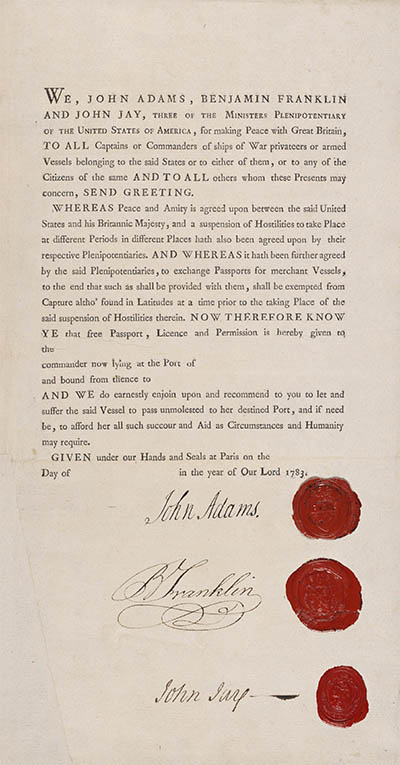
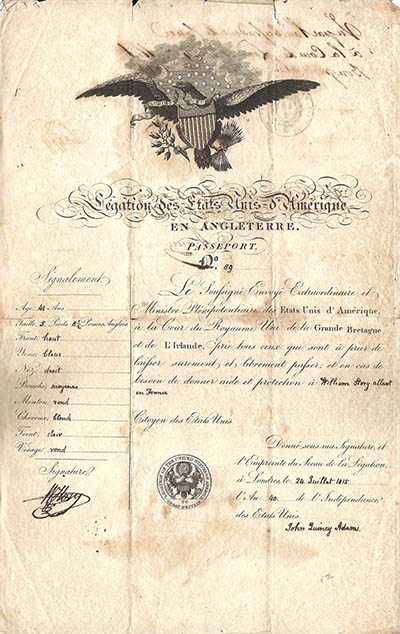
originally issued in Paris, hence the French text. Wikimedia
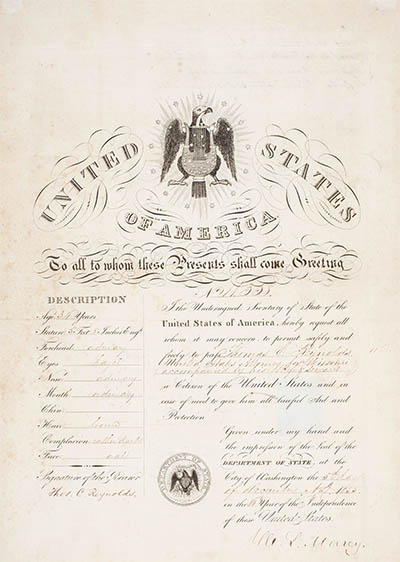
Gradually the US passport—like those in Europe—changed from a state-sponsored diplomatic letter of introduction into a document proving identity and citizenship. Although by the early part of the 20th century a passport wasn’t required for Europeans entering the US (even if that visit was to be permanent), one was required for an American visiting most European countries, so in 1915 President Wilson signed an executive order requiring, for the first time since the Civil War, a passport for any US citizen travelling abroad.
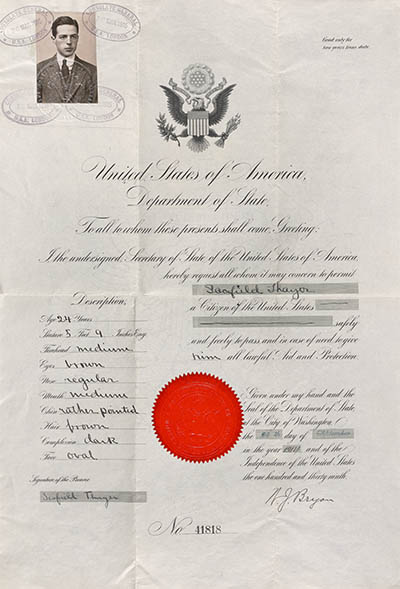
Along with Wilson’s executive order came new identity requirements, which included, among other things, documentation supplied in person and triplicate photographs. These new requirements—necessary for a federal government that knew remarkably little about its’ citizenry–were seen by many as an egregious intrusion into their private lives. After all, identity papers and mug shots were for those who couldn’t be trusted—hoodlums and the criminally insane—not the average American. Soon the the newspapers were calling it the “passport problem” or the “passport nuisance.” In 1920 the Washington Post wrote “It is difficult for anyone who has not actually gone through it to realize the feelings of personal humiliation which the process implies. In many instances passport officials apparently went on the assumption that you were a spy until proven otherwise.”
The State Department determined that Paul and Ethel were not spies or threats to American security and five days after their court appearance—on May 16th—they were granted their passports. Theirs were among some 1100 issued that day and 130,000 that year.

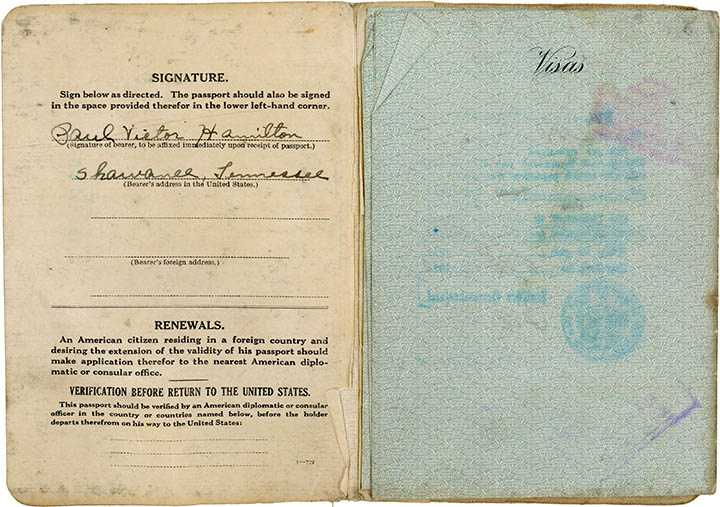
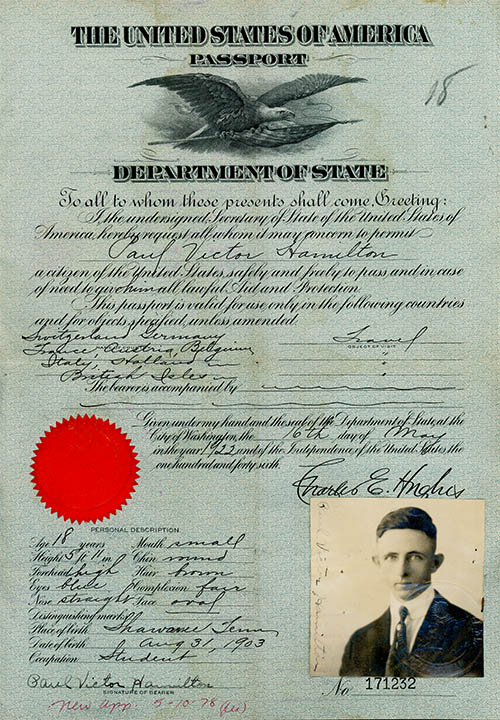
II.
With the rapidly declining cost of transatlantic travel and a new American middle- class eager to see the world, a burgeoning travel industry began offering so-called “educational trips” to teachers and college students. Magazines of the 1920s were filled with classified ads from tour guides offering the historic sites of Europe (“Churches, Galleries, Alpine summits, Italian hill towns, the Passion Play”) during the day, and although not implicitly stated, a night-life of drinking in bars and cafes —something not possible in Prohibition-era America.
Paul and Ethel signed up with the Temple Tours of Boston, one of the largest tour operators of the day, which advertised “the most interesting routes, the most skilled management, the lowest prices and the greatest satisfaction.” They each paid around 700 dollars—or nearly 10,000 dollars in today’s money—for the trip. Clearly, this was going to be a once-in-a-lifetime thing.
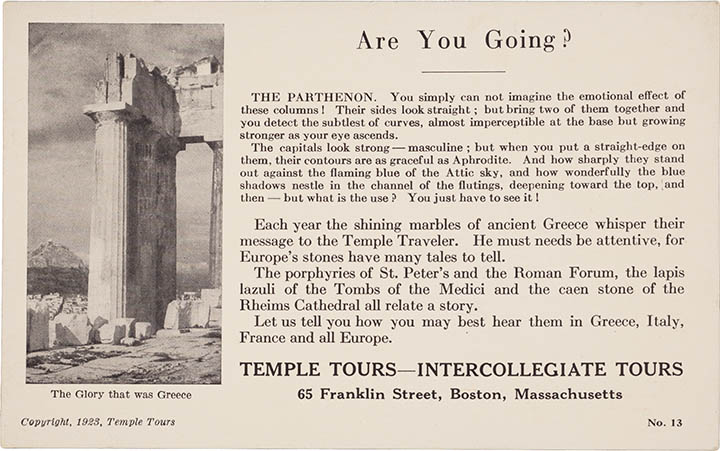
European travel had become easier than ever before, but it was still nothing like it is today. Some of Paul and Ethel’s visas were purchased from European consulates in Boston in late May and the rest in New York two weeks later. Although it’s possible that they obtained these visas themselves, it wasn’t likely; at the time tour operaters and cruise line employees routinely did this on behalf of their clients. They even, if necessary, acted as ersatz witnesses in court to help their clients obtain passports. It was a competitive business and everyone involved did anything necessary to get a paying customer, whether it was technically legal or not.
On June 20th, 1922 the siblings departed from New York on the S.S. Chicago, a 508-foot, twin-mast ocean liner belonging to the Compagnie Générale Transatlantique (the French Line). They were among some 358 2nd-class passengers. Five days later—on June 25th—they arrived at the Normandy port of Le Havre.
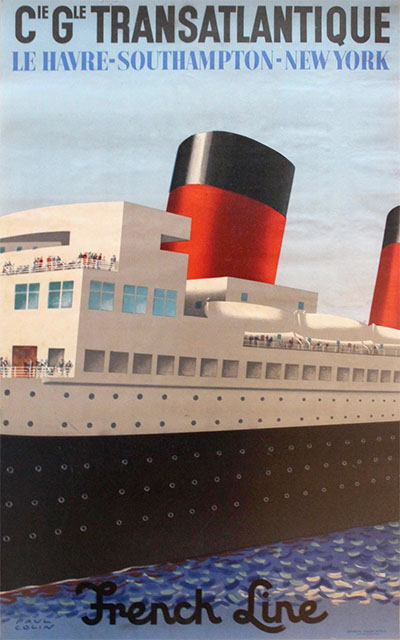
According to Paul’s visa stamps they spent the next 55 days visiting France, Italy, Switzerland, Austria, Germany, the Netherlands and Great Britain. We can imagine that Paul found a girl in Paris or that Ethel found a boy in Rome; or that they pulled out their Kodak Brownie and took a picture in front of the Arc de Triomphe or the Trevi Fountain, but there are no surviving photographs, letters, postcards or diary entries from their vacation, so whatever they did we can only imagine. The trip must have been important, however, because Paul saved his passport—valid for only a year—as a souvenir for the rest of his life.
On August 19th they returned from Liverpool on the White Star Line S.S. Regina. They were two of 289 second-class American passengers. Six days later they arrived at the port of Quebec. They didn’t need their passports to re-enter the US.
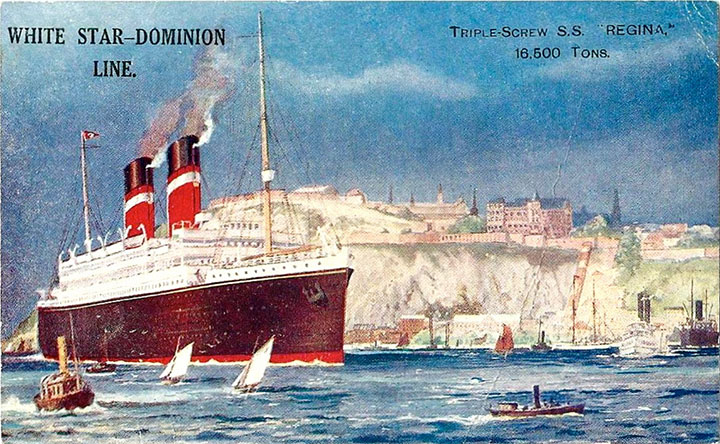
III.
Paul and Ethel’s passports were the last of the fold-out type diplomas. After the League of Nations conference in 1920 and the passage of the Passport Act in 1926 the document was changed to the new international standard of a 32-page pocket- sized booklet—which, with the addition of machine-readable text in 1981 and biometric chips in 2006—remains the format to this day.
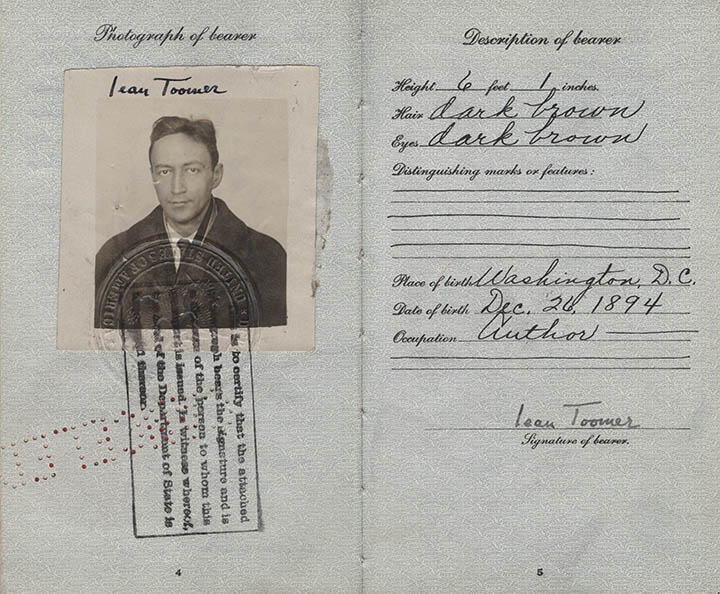
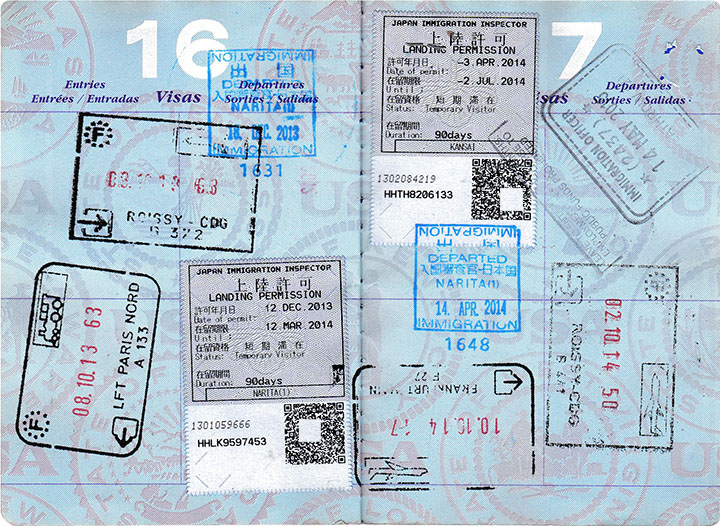
The current US passport is among the least restrictive in the world. None of the countries Paul and Ethel visited in 1922 require a visa today.
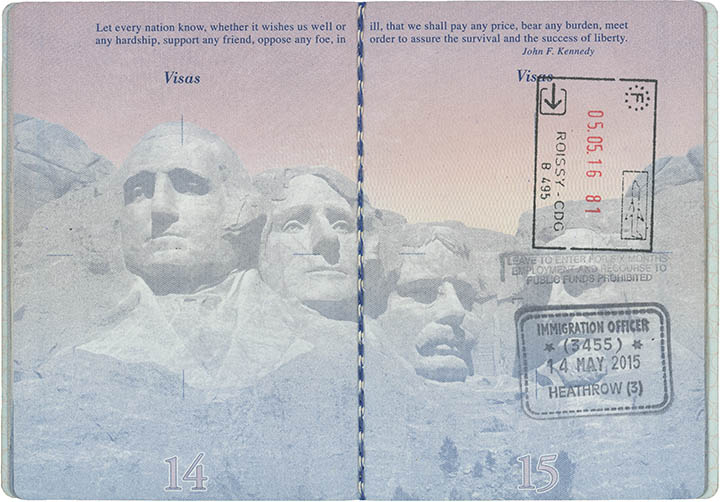
IV—Epilogue.
After her trip Ethel Mae returned to the family farm, which she ran after her mother’s death in 1923, and began her career as a teacher. Eventually she became the superintendent of the Claiborne County School System. In 1946 she joined the faculty at nearby Lincoln Memorial University and was a math instructor until her death from cancer on December 7th, 1956. She never married.
When Paul Victor came home he began his studies at Vanderbilt Medical School and after graduating in 1929 did a residency at Cincinnati General Hospital. He eventually returned to Europe—with a delayed birth certificate—but this time it was as an Army physician with the 102nd General Hospital in England. After his discharge in 1946 he came back to Cincinnati and practiced as an internist for the next 50 years. “He was an excellent diagnostician and fun to work with,” said his long-time office manager Virginia Howd, “he had sympathy and compassion for the elderly and disadvantaged.” Paul died of natural causes at his home on New Years Day in 1998. Like his sister he never married, but interestingly, Virginia, who died in 2012, was buried next to him.
—December 4th, 2016. Design
